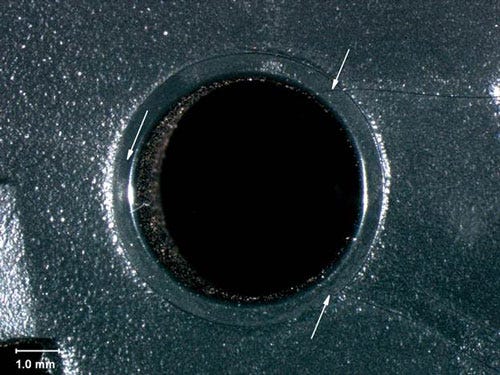Looking to Your Knit Lines with Molding
December 27, 2013
A medical device designer might look up a polymer's physical properties and game out how a part made of the polymer will withstand stress. But start molding the part, and it might not hold up anyway.
Molding adds an entirely new dimension to what needs to be testing out. There's temperature, mold pour rate, mold geometry, and where the injection takes place, says Eric Hill, president of Midland, MI-based Impact Analytical.
Hill finds it a common problem: Molding isn't properly taken into account in part design. Many younger companies simply don't have the resources to anticipate issues beforehand.
"You can form all kinds of knit lines and all sort of things within the material when it's molded that can be in direct line with where the stress is going to be," Hill says.
See Mark Bonifacio, principal and owner of Bonifacio Consulting Services, deliver a presentation on challenges of medical device contract manufacturing on Tuesday, February 11, at MD&M West in Anaheim, CA. |
Knit lines can potentially be thought of as similar to the grain of a piece of steak. In the case of polymer molding, molecules orient themselves in the direction of the flow of the material into the polymer mold. If stress later on is parallel to the knit lines, they can snap.
|
This photo from Impact Analytical shows a part made from polycarbonate/ABS material. There are obvious knit lines (marked with white arrows). The knit lines are the result of poor molding conditions (likely molding at too low of a temperature). |
"As soon as that part or material is stressed, it can be real conducive to fracture, cracking, breaking, just because of the way it's been molded. All the while, the material could be the correct material," Hill says.
Knit lines can also be an issue for polymer parts with glass particles added to them.
The whole point is that medical device designers need to have an experienced molder on board to think about these issues while the mold is being designed. "That will get you a large percentage of the way there," Hill says.
When it's time to go beyond the prototype, mold a couple of parts and test them in terms of performance. If breaks or failures occur, a laboratory such as Impact Analytical can conduct microscopy work to determine the cause of the failure.
By studying the material under a microscope, Impact can find the knit lines.
A change in where the injection molding takes place can potentially fix the problem. "Then you can go back and make adjustments," Hill says.
It is important to find a lab with experience with polymers--and the know-how when it comes to what to look for and how to interpret the data.
Impact Analytical has not yet seen 3-D printed parts in need of testing for failures, but Hill agrees 3-D printing could open up a whole new set of issues as it becomes more ubiquitous.
"3-D printing is going to give people access to forming all sorts of innovative and useful materials. ... You have to resist the temptation to mold these unique shapes that may have an application, but don't take the time to do the proper modeling beforehand or the proper testing after you've made the device to show it can withstand the stress," Hill says.
Chris Newmarker is senior editor of MPMN and Qmed. Follow him on Twitter at @newmarker and Google+.
About the Author(s)
You May Also Like


.png?width=300&auto=webp&quality=80&disable=upscale)
